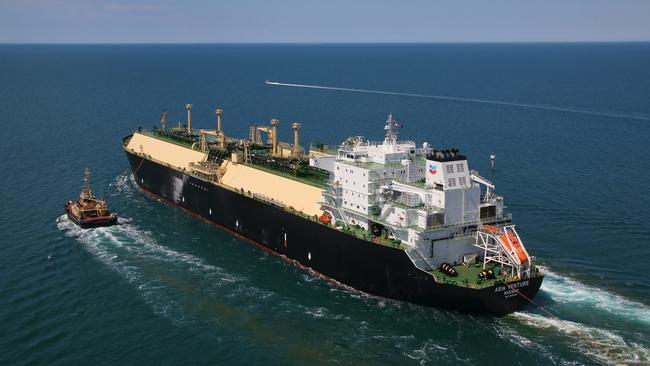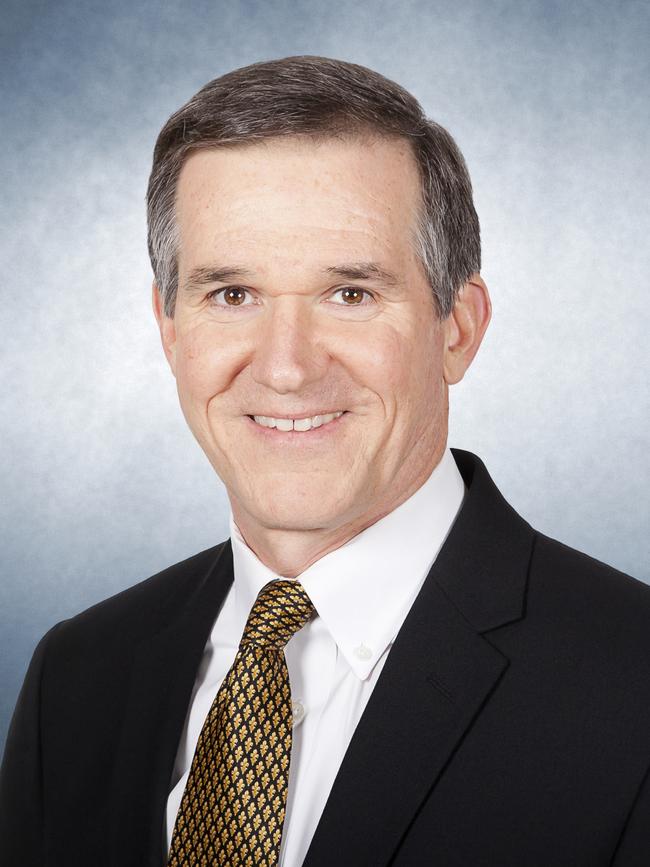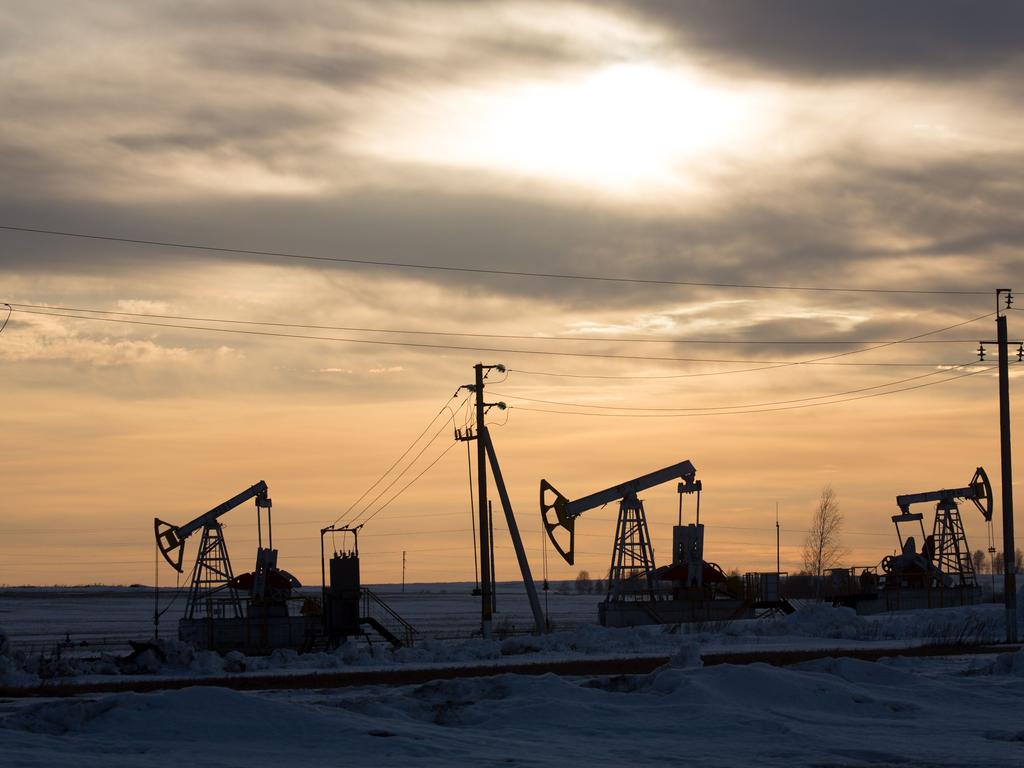Chevron’s local boss Mark Hatfield loves the oil industry

Fourteen months ago Hatfield took over the running of Chevron’s vast portfolio of assets in Australia, the biggest investment outside North America, topping $100bn over 60 years.
At the Credit Suisse energy conference a straight-talking Hatfield took in Chevron’s ongoing commitment to Australia, rumours of a sale of its stake in the North West Shelf LNG project, the awful conversation he had to have with head office over a new Australian levy and the prospect that gas customers would pay a premium for clean fuel – and John Wayne.
Most striking were the warm words he had for his local competition Woodside following its merger with BHP petroleum.
Chevron’s operations include the Gorgon and Wheatstone LNG projects, the world’s largest single carbon capture and storage project, the country’s largest onshore oilfield and a one-sixth share in the North West Shelf project.
Hatfield is Chevron lifer, a petroleum engineer who joined up 40 years ago. His father idolised John Wayne. “That persona John Wayne put out: live with honour, always played the good guy, have integrity, work hard. Those are some of the things that my father tried to instil in my brother and my sister and myself.”
Not that he is saying he is John Wayne, he insists, but he is an avowed backer of oil and gas. “It’s big, it’s bold, it’s ever evolving and complex. It’s something that fascinates a lot of people who are in it.”
Going forward he stresses how important it will be to work together. “When you get that collaboration, people want to get the very best. And as we evolve with the transition to ever-cleaner (fuel), I think that is going to be the secret sauce that helps us get there,” he says.
Hatfield’s previous role was a five-year stint running Chevron’s business in the Gulf of Mexico, a region on analyst radars after Woodside acquired BHP’s GOM portfolio.
“I thought that was brilliant,” Hatfield says of the Woodside deal. “Congratulations to Meg O’Neill and her team for making that successful merger. BHP has had great success there. We’ve been partners with them on a few projects and I’m sure Woodside will continue that success, so good on them.”
Understanding the corporate ins and outs of the many joint ventures off the north-west coast of Australia is no easy feat.

Chevron has two giant fields Gorgon and Wheatstone, each piped up to its own dedicated LNG processing infrastructure. Chevron’s fields further out provide decades of development opportunity which means the plants are full to capacity.
Not far away is the North West Shelf project, an LNG processing joint venture where Chevron has a one-sixth stake with Shell, BP, Mitsubishi/Mitsui. Woodside has a one-third share.
Gas to the North West Shelf is running down and in 2020 it was converted to a tolling operation that would take third party gas. So far, that includes Waitsia gas and some from Woodside’s Pluto. The challenge is getting partners to agree to what other stranded gas might make use of the project.
Chevron’s stake in the North West Shelf has been on the sales block, with rumours that it got close to selling to Blackrock in the last couple of months.
Asked whether it was still for sale, Hatfield invoked a former chairman of Chevron: “He said everything in our company’s for sale, including my desk.”
Chevron had been approached for the asset and then opened the sale up to more parties. “We got close, but at the end of the day, we love the asset. We love the partnership,” he says.
North West Shelf’s value only really goes up if it can attract new gas that brings in toll revenue. Development of the Browse fields where Chevron is not a joint venture partner could be a contender. But former Woodside CEO Peter Coleman previously cited Chevron as a problem.
“I’m not privy to that relationship the past, but what I can say is that Meg and I have committed to work together as partners and not opponents,” says Hatfield. “We both talked about the value of partnership and that’s a core value for Chevron. So that’s where we are.”
Gorgon Phase 2 comes online in the next quarter and Chevron has the capacity to produce about half of all WA’s domestic gas needs. Hatfield says that after supplying the domestic market and international customers, excess capacity at spot prices could be taken up to the North West Shelf.
Two other projects occupy Hatfield’s time: the first is a $6bn investment in subsea compression technology that will enable more near-term gas extraction and also make the long-term gas supply chain more commercially viable.
The other is Gorgon’s carbon capture and storage where Chevron has so far injected 6 million tonnes of CO2 and is running at 2 million tonnes a year. This is still half the nameplate level but it remains the largest CCS plant in the world. Work continues towards 100 per cent safe injection.
“That will come here in the coming years, we are quite sure of that,” Hatfield says.
To reach the global net zero by 2050, the International Energy Agency says carbon capture and storage at about 200 times today’s capacity will be required.
Hatfield goes a step further. He believes customers are looking for “clean gas” and would pay up for gas offset by CCS. “They really want to understand what could we do to help them decarbonise.
“I think it won’t be long before some of our customers are willing to pay a premium for that ever cleaner energy because it will cost some additional investment.”
Chevron has earmarked $8bn in lower-carbon investments including in hydrogen which it already produces in the US.
There is one matter that riles the Chevron chief. Last year he was forced into a “please explain” to head office after Canberra imposed a levy of 48c per barrel on all offshore oil and gas producers. A botched decommissioning of retired gas infrastructure left taxpayers with the bill.
Chevron is a leader in responsible decommissioning and Hatfield has been at the forefront. So how did he deliver the news?
“It was an awful discussion. When I think about the things that have frustrated me since I moved into the role, that would be number one. It seemed arbitrary how it was set up and violated that core principle on stable fiscal environment. And being the largest producer in Australia, we were the most penalised,” he says.
Levy aside, Chevron is committed to Australia with gas supply plans to fill its plants for decades. The company has paid $6.5bn in taxes, levies and royalties since 2009 and is paying $600m this year. “We have been a taxpayer, and we’re going to be a what I call a ginormous taxpayer.”



“He had me at John Wayne,” says Credit Suisse’s energy resource analyst Saul Kavonic after the first major public outing of Chevron’s Australian lead Mark Hatfield.